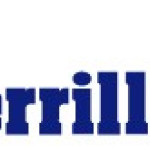- Industry: Financial services
- Number of terms: 10107
- Number of blossaries: 0
- Company Profile:
The issuing of new debt for purposes of retiring earlier debt in order to take advantage of a drop in interest rates. The funds received from the new lower interest debt are invested in low-risk government securities, backing the original debt, with maturity schedules corresponding to call dates of the original bonds. Also known as Advance Refunding.
Industry:Financial services
Options traded on one or more of the option exchanges. Unlike over the counter or unlisted options, which must be exercised to have any value, listed options are fully fungible and have an active secondary market on the options exchanges. Most traders in listed options close their positions in this secondary market prior to exercise.
Industry:Financial services
The price of a security at the close of the previous trading day.
Industry:Financial services
The offer price or bid price and quantity offered or quantity asked for a listed security, which is traded on an exchange.
Industry:Financial services
The Yield as of the close of the previous trading session.
Industry:Financial services
A fund's initial or deferred sales charge, if any. "Front-end Load" funds have initial sales charges, which are fees paid at the time of purchase and are expressed as a percentage of the amount to be invested. "Back-end Load" Funds have deferred sales charges, which are paid at the time of redemption and generally decrease with the amount of time that the fund shares are held after sale, ultimately declining to 0%. "Level Load" Funds also have deferred sales charges of a shorter duration (generally one year) and a smaller amount (typically 1% of amounts invested), but impose a more significant Rule 12b-1 fee. In contrast to "Load" funds, "No-Load" funds do not have an initial or contingent deferred sales charge, and may only impose a Rule 12b-1 fee that does not exceed 0.25% annually. "Low Load" funds also do not have initial or deferred sales charges, and impose Rule 12b-1 fees of between 0.25% - 0.35% annually.
Industry:Financial services
Net Asset Value at the close of the previous trading session.
Industry:Financial services
The amount of money a policy owner can borrow against the cash value of a life insurance policy.
Industry:Financial services
Previous trading day's closing price unless otherwise stated. For certain securities, the latest price received from a pricing service is displayed.
Related to Order Entry: Definitions of the price qualifiers are stated below.
Market (MKT) - This is an order to buy or sell a stated amount of a security at the most advantageous price obtainable at the time the order is submitted.
Limit Price - This is a price instruction, where the client wishes to buy or sell securities at a specific price or better. With a sell limit order, the customer is instructing that the sale be made at or above the specified price. With a buy limit order, the customer is instructing the purchase be made at or below the specified price.
Stop Order (STP) - This price is above the prevailing market price on a buy stop, or is below the prevailing market price on a sell stop. Buy stop orders are generally used to limit loss or protect unrealized profits on a short sale. A stop order becomes a market order when a stock trades at or through the stop price.
Stop Limit - This order gives instructions for a limit order to be entered when the Stop Order becomes effective.
Related to Net Asset Value: Market price as of Net Asset Value date.
Related to Trade Confirmation: Execution price for the trade.
Industry:Financial services
